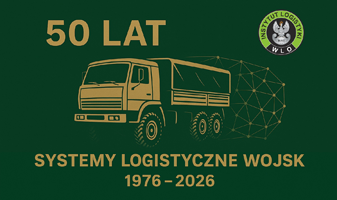ARTYKUŁ ORYGINALNY
Participation of military logistics services in the provision of food in Warsaw in september 1939
1
Institute of Organisation and Management, Faculty of Security, Logistics and Management, Military University of Technology, Poland
2
Faculty of History and Archeology, Maria Curie-Skłodowska University in Lublin, Poland
A - Koncepcja i projekt badania; B - Gromadzenie i/lub zestawianie danych; C - Analiza i interpretacja danych; D - Napisanie artykułu; E - Krytyczne zrecenzowanie artykułu; F - Zatwierdzenie ostatecznej wersji artykułu
Data nadesłania: 07-06-2023
Data akceptacji: 28-12-2023
Data publikacji: 31-12-2023
Autor do korespondencji
Grzegorz Jakub Jasiński
Instytut Organizacji i Zarządzania Wydziału Bezpieczeństwa, Logistyki i Zarządzania, Wojskowa Akademia Techniczna, Generała Sylwestra Kaliskiego 2,, 01-476, Warszawa, Polska
Instytut Organizacji i Zarządzania Wydziału Bezpieczeństwa, Logistyki i Zarządzania, Wojskowa Akademia Techniczna, Generała Sylwestra Kaliskiego 2,, 01-476, Warszawa, Polska
SLW 2023;59(2):231-246
SŁOWA KLUCZOWE
DZIEDZINY
STRESZCZENIE
The fighting in September 1939 has been the subject of a large body of historical literature. Nevertheless, due to the scattered and incomplete source base, many issues require further research and a deeper, broader treatment. This is all the more important because the course of contemporary conflicts, including the ongoing war in Ukraine with the Russian Federation, shows the recurring nature of many experiences in military history.
On the basis of a historical analysis of unknown and hitherto unused accounts from the Polish Central Military Archives (PCMA), the Archives of the Polish Institute and the General Sikorski Museum, the Pilsudski Institute in London, supplemented by documents from the PCMA and the literature on the subject, the authors’ goal is to show the crucial problems of food supply for troops fighting in the defense of Warsaw in September 1939. As a research hypothesis, they assumed that despite the planning, organisational, formal and practical difficulties, it was mainly thanks to the initiative and resourcefulness of some officers of various levels and various supply branch structures that the initial chaos was eventually brought under control and food was provided to the fighting troops until the end of the struggle for the Polish capital. This, in turn, had a not insignificant impact on sustaining the high morale and fighting ability of individual units and subdivisions, as well as the civilian population encouraged by German propaganda to leave the city in exchange for - as the invaders put it - freedom and food.
Udostępnij
Przetwarzamy dane osobowe zbierane podczas odwiedzania serwisu. Realizacja funkcji pozyskiwania informacji o użytkownikach i ich zachowaniu odbywa się poprzez dobrowolnie wprowadzone w formularzach informacje oraz zapisywanie w urządzeniach końcowych plików cookies (tzw. ciasteczka). Dane, w tym pliki cookies, wykorzystywane są w celu realizacji usług, zapewnienia wygodnego korzystania ze strony oraz w celu monitorowania ruchu zgodnie z Polityką prywatności. Dane są także zbierane i przetwarzane przez narzędzie Google Analytics (więcej).
Możesz zmienić ustawienia cookies w swojej przeglądarce. Ograniczenie stosowania plików cookies w konfiguracji przeglądarki może wpłynąć na niektóre funkcjonalności dostępne na stronie.
Możesz zmienić ustawienia cookies w swojej przeglądarce. Ograniczenie stosowania plików cookies w konfiguracji przeglądarki może wpłynąć na niektóre funkcjonalności dostępne na stronie.


